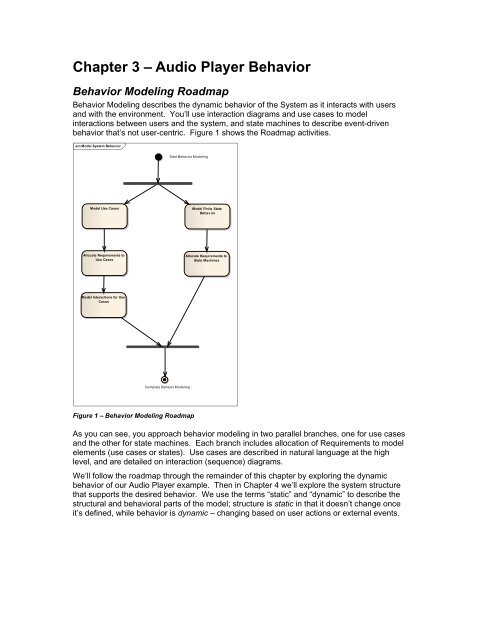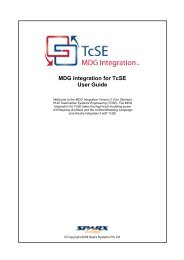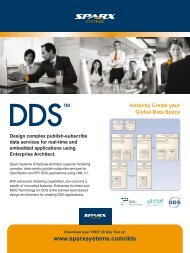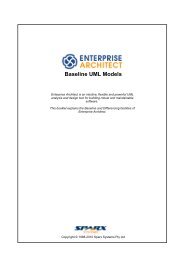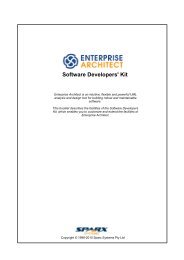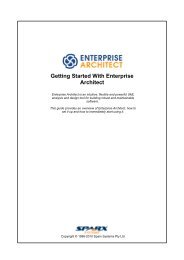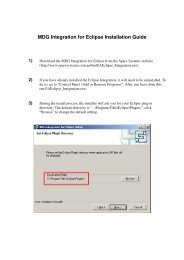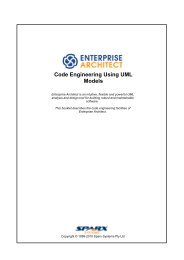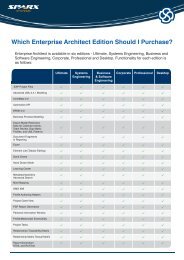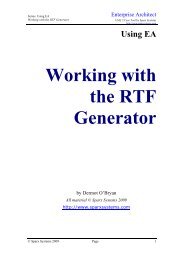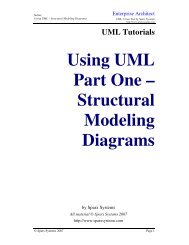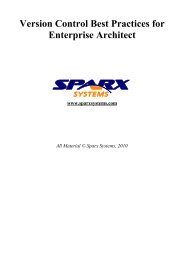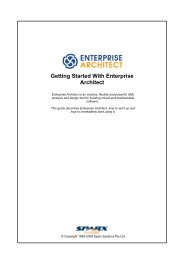Embedded Systems Development using SysML - Enterprise Architect
Embedded Systems Development using SysML - Enterprise Architect
Embedded Systems Development using SysML - Enterprise Architect
Create successful ePaper yourself
Turn your PDF publications into a flip-book with our unique Google optimized e-Paper software.
Chapter 3 – Audio Player Behavior<br />
Behavior Modeling Roadmap<br />
Behavior Modeling describes the dynamic behavior of the System as it interacts with users<br />
and with the environment. You’ll use interaction diagrams and use cases to model<br />
interactions between users and the system, and state machines to describe event-driven<br />
behavior that’s not user-centric. Figure 1 shows the Roadmap activities.<br />
act Model System Behavior<br />
Start Behavior Modeling<br />
Model Use Cases<br />
Model Finite State<br />
Behav ior<br />
Allocate Requirements to<br />
Use Cases<br />
Allocate Requirements to<br />
State Machines<br />
Model Interactions for Use<br />
Cases<br />
Complete Behaior Modeling<br />
Figure 1 – Behavior Modeling Roadmap<br />
As you can see, you approach behavior modeling in two parallel branches, one for use cases<br />
and the other for state machines. Each branch includes allocation of Requirements to model<br />
elements (use cases or states). Use cases are described in natural language at the high<br />
level, and are detailed on interaction (sequence) diagrams.<br />
We’ll follow the roadmap through the remainder of this chapter by exploring the dynamic<br />
behavior of our Audio Player example. Then in Chapter 4 we’ll explore the system structure<br />
that supports the desired behavior. We use the terms “static” and “dynamic” to describe the<br />
structural and behavioral parts of the model; structure is static in that it doesn’t change once<br />
it’s defined, while behavior is dynamic – changing based on user actions or external events.


